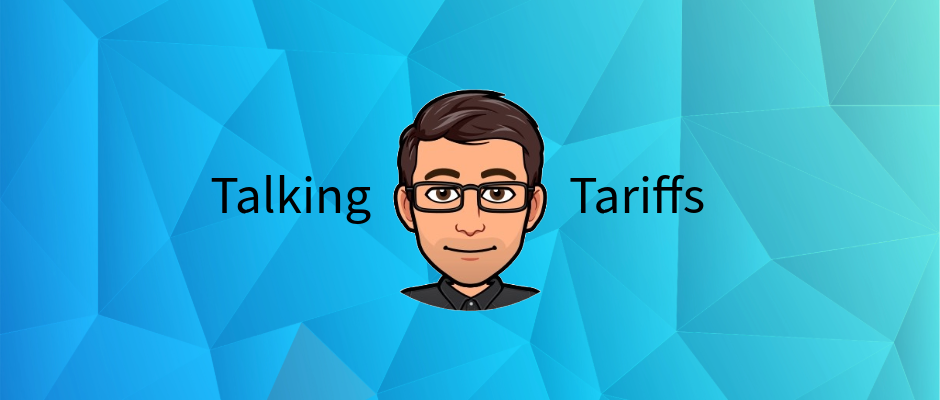The talk of the town in recent days has been “Tariffs.” President Trump loves them and has wasted no time threatening them during his first few weeks back in office.
So far he has:
- Threatened a 25% tariff on Columbia for not accepting deportees.
- Threatened a 25% tariff on Canada for not better protecting their border with the US (delayed for 30 days)
- Threatened a 25% tariff on Mexico for not better protecting their border with the US (delayed for 30 days)
- Added a 10% tariff on all Chinese goods coming into the US
And that’s all within the roughly 2.5 weeks he has been in office.
Impacts of Tariffs:
Contrary to much of the back and forth that you see on websites such as x.com, tariffs are not likely to lower the price of US goods. Below are a few first and second-order effects of how tariffs will ultimately play out throughout the economy.
Tariffs Will Realign Supply Chains
The thought that tariffs will create domestic production is not necessarily guaranteed. Let’s assume that a 25% tariff was enacted on all goods coming from Canada (as it was threatened). The purchasers of those goods (companies or individuals) will immediately start looking for the same or similar goods that are now the most cost-competitive while still meeting their quality needs. That may result in some of the production coming back to the US. It may also result in some of that production going to other countries as well though. Without knowing the details of each supply chain, you cannot say for certain.
What is certain is that tariffs create a value chain question where purchasers need to weigh, and ultimately decide, between the likely higher cost of US labor and the freight needed to purchase from other countries.
Tariffs Will Cost The US Consumer
Going hand-in-hand with the supply chain realignment, tariffs will ultimately cost the US consumer money. Using the Canada example again, if an individual or business is currently buying a good or service from Canada, then it is the optimal price/quality mix to meet their requirements. Adding a 25% tariff on Canadian goods flips that price/quality mix on its head and by and large will cause consumers to sacrifice either quality or price going forward as they find the next best option.
There is also something called retaliatory tariffs that are very likely to happen in the event that the US does move forward. We have already seen this with China. When Trump announced an additional tariff on Chinese goods, China quickly came back and announced a tariff on US goods.
Tariff Impact Example:
Let’s assume you are a food manufacturer today buying canola oil for your product due to the perception that canola is a healthier alternative than soybean oil. Canada is the world’s largest canola producer with over 30% of the world’s production and the vast majority of US canola comes from Canada. Upon tariffs being enacted, you, as a food manufacturer, will immediately start looking at alternate solutions. You will look at:
- US canola, which does exist, but is much less available due to the economics of production domestically. You may not be able to buy enough domestic canola to meet your demand.
- US Soybean oil is a less expensive option but is ultimately a perceived trade-down in quality.
- Canadian canola is still available but costs roughly 25% more than it did yesterday. You likely don’t have great margins to begin with (no one does in food), so you will likely need to push some of this along to the consumer via a higher price. It won’t be immediate due to the lag associated with food pricing, but it will happen.
As the manufacturer, you are tasked with determining the best option for your company, your brand, and your financials. Not an easy place to be! There is also a lag between when tariffs are enacted and when a switch can be made, so your financials get squeezed immediately while you work through your options.
My Belief on Trump:
Enough with economics, let’s get into theoretical politics. My belief on President Trump is very similar to what listeners of Doomberg regularly hear, “take him seriously, but don’t take him literally.” Like it or not, Trump believes that he has a very large stick in the form of tariffs and he is going to use it, or at least threaten to use it.
Sure, there are instances where Trump will threaten Tariffs and is likely to follow through (think China), but he is less likely to fully enact long duration tariffs (6 months or longer) on countries like Canada and Mexico for a number of reasons. The first, and most important, is that the US is too important to those two countries, so they are likely to do what he’s asking (read demanding). The second is that he knows there would be significant economic impacts domestically.
Europe and a host of other nations fall into a range of different buckets. Sure, there are countries like China that is highly likely to experience long duration tariffs. They know this though. When Trump raised their tariffs by 10% they just raised US tariffs back. There are other countries like those in Europe that are much more likely to negotiate with Trump when he swings the tariff stick and they are likely to see a much more muted outcome.
The fact of the matter is that he has used, and will likely continue to use, tariffs as a means to get other countries to the table. Trump believes that he has a very large stick, and in many cases, he does, so expect him to continue swinging it around the room that is global trade – just expect that in many cases his bark will be a lot worse than his bite ultimately is.



